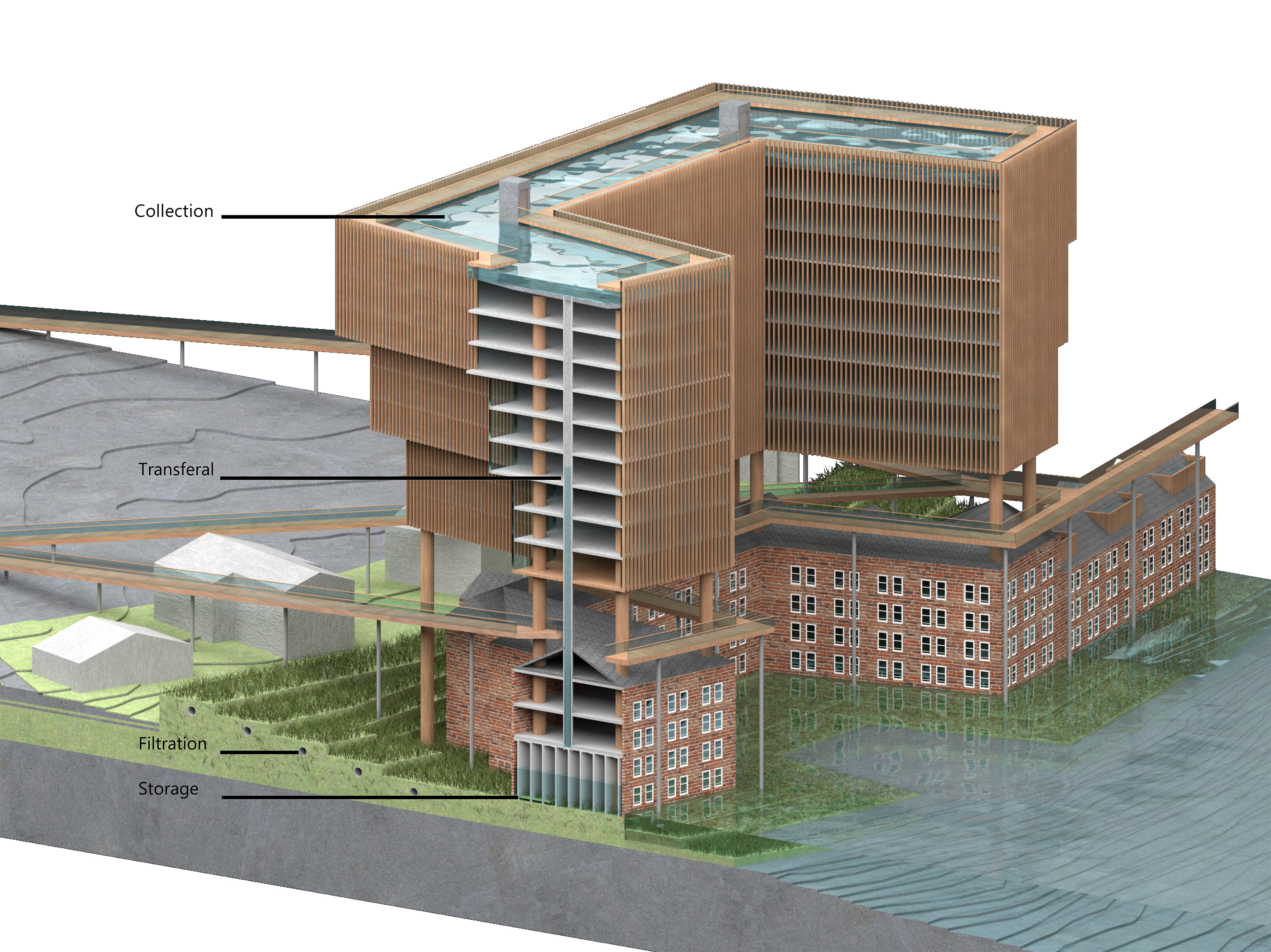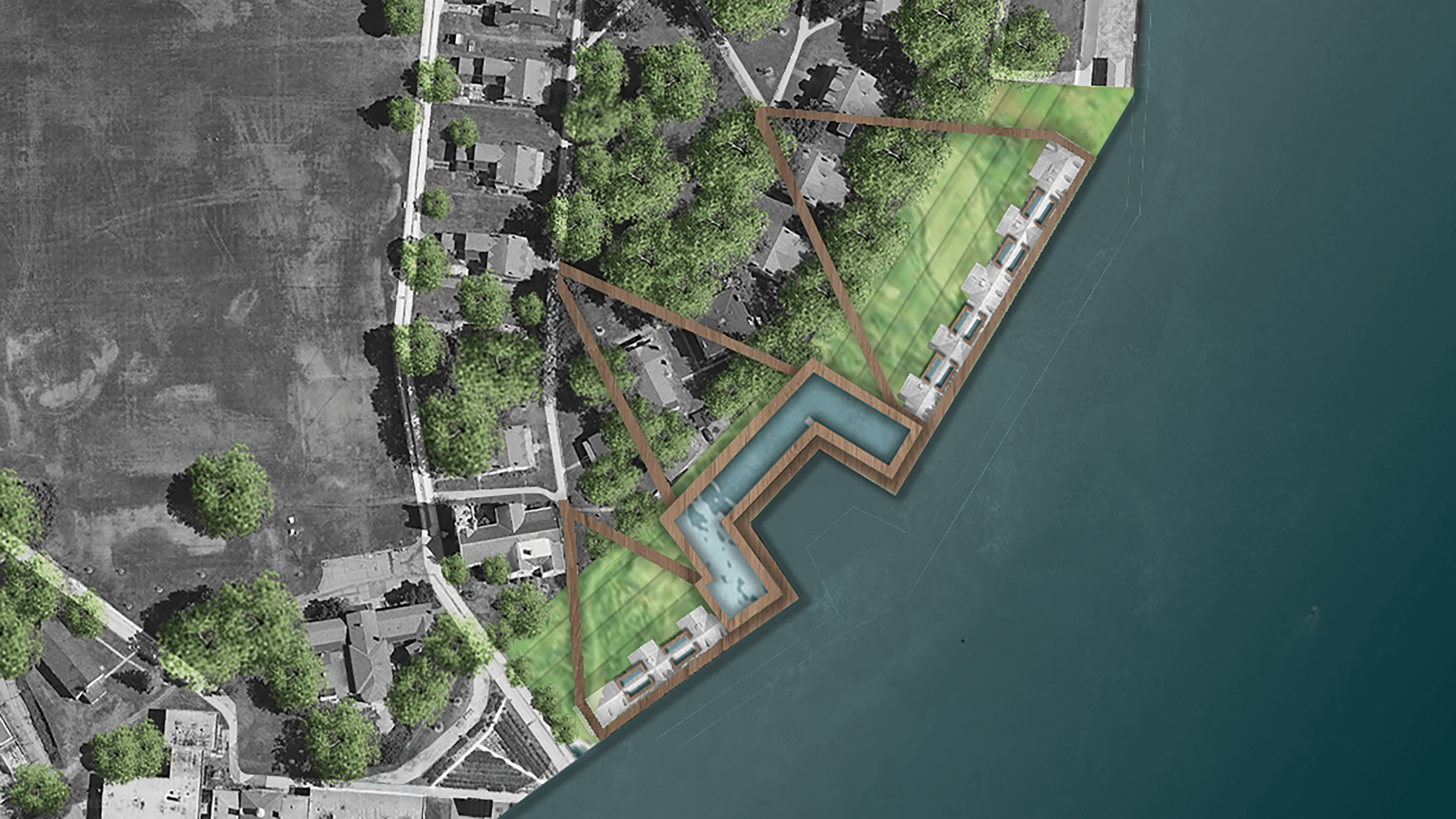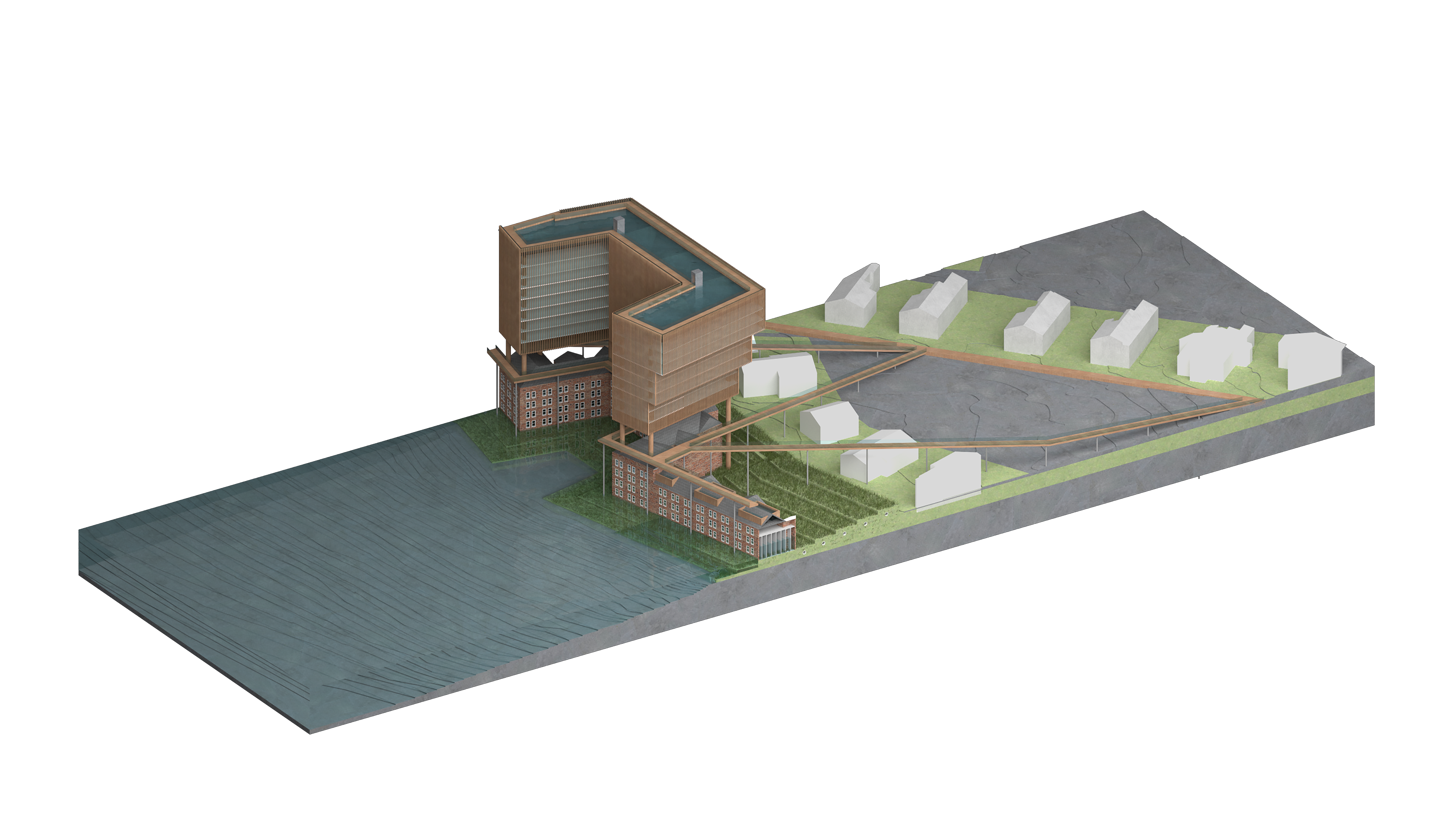Future of Urban Archipelago, Governor’s Island Rainwater Harvesting

Naz Olmez
School of Architecture
This project aims to explore New York City as an archipelago, specifically focusing on Governors Island. Freshwater is under the water table in ideal island conditions, but this differs from the condition on Governors Island. There isn’t any groundwater to support a freshwater aquifer. This project focuses heavily on collecting rainwater from roofs for storage and later reuse as greywater within the building. The proposal uses the existing buildings, Building 12, on Governors Island and builds a modern extension on top of the building, working with the increasing height limits. The extension connects Building 12 with Nolan Park. It functions as a prototype of an artificial aquifer-like system that can be used for rainwater harvesting.
Blue Roof systems are used on the flat roof of the new extension. They help collect the rainwater on the roof before it is transferred. Collected stormwater is slowly draining. Although some water is lost through evaporation, mostly in summer months, it still is a convenient method. There is access to the roof from the building itself and a boardwalk where people can go up and walk. The blue roof system has both a functional and communal purpose. The collected rainwater is transferred with a vertical system to the first two floors of the existing building. Collected rainwater is stored there before it is sent to natural filtration.
The collected water is stored down at the first two levels of the existing building. The existing building is kept, but the first two levels’ functions have changed to rainwater storage. Created wetlands are used as a natural filtration. Filtered greywater is then sent back and used in the building. Also the back of the existing structure is utilized as a seawall strategy to embrace water inundations and mitigate the risks of sea level rise on Governors Island.

